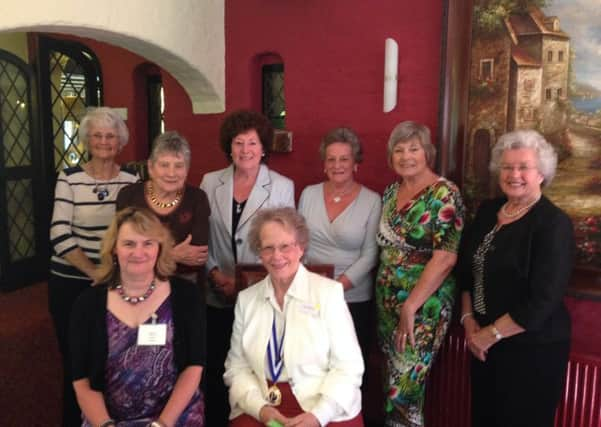‘Humerus’ day as Fryern Ladies talk about bones


It had certainly been featured highly on the agenda as the sumptuous, annual Bring a Friend Lunch – catered by West Sussex Golf Club – only preceded the monthly meeting in May by two days!
However the ladies didn’t disappoint and plates cleared settled back to enjoy Sarah Green – The Speaker of the Day – tell us how and why “Dead Men Do Tell Tales”.
Advertisement
Hide AdAdvertisement
Hide AdThis unusual and intriguing title - certainly not one for the faint hearted – was well presented as Sarah, with her interests in Ancient History, Archaeology, Classical Studies and Osteoarchaeological Research outlined this subject to a fascinated audience.
She said that there was no greater connection with the past than the physical remains of our ancestors and that we’re constantly trying to understand who we are and where we came from and that archaeological human skeletons are the remains of who we once were.
It is amazing how much information can be obtained from the humble bone. Indeed Sarah told us that her fellow archaeologist husband teases her, should they eat out in public, as she is inclined to examine any bones (not human of course) inadvertently left on plates – luckily today’s meal was fish fillets so we were spared that embarrassment!
So what can we learn from skeletal remains? An enormous amount we discovered as in evidence of gender, disease, physical characteristics, lifestyle, trauma and ageing in human fossil forms.
Advertisement
Hide AdAdvertisement
Hide AdProlonged investigations and research on ageing have ambitiously been calculated for years.
One such gentleman in particular a John Lightfoot (1602 – 1675) who was Vice Chancellor at Cambridge decided to conduct such work to “prove” The Date of Creation.
I’m sure that you’ll be pleased to know that it was on Sunday October 23rd 4004 B.C. just before nightfall – a good trivia question no doubt. Needless to say other research produced different results.
More factually we heard that the skeleton’s role is for support, locomotion and protection. We have 206 bones in our bodies and over half – 106 – are in our hands and feet.
Advertisement
Hide AdAdvertisement
Hide AdThere are an amazing 22 in our skulls. Should you examine a skeleton, information from the teeth would show where the person was born and the bones would relate to where they lived when they died.
Sarah took many questions with one very relevant one from Ann Salmon who asked, “How would scientists in the future endeavour to find out more about our life today since most people opt for Cremation rather than Burial.” No problem as you can also learn a lot from ashes we were told!
Maureen Girard thanked Sarah on our behalf for an interesting and rather humorous afternoon.
Our next meeting will be on June 4th when we shall hear about Sussex Snowdrop Trust by Diana Levantine.
Report by Russ Fry. Picture by Simon Green - General Manager of The Roundabout Hotel.